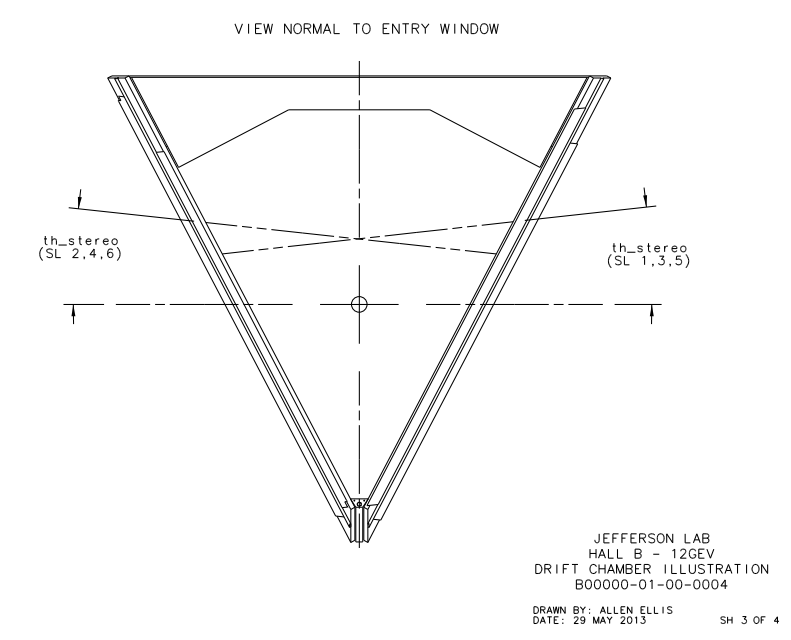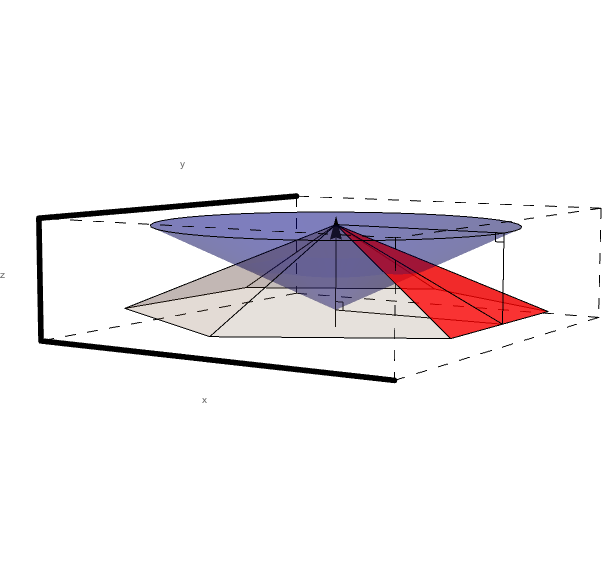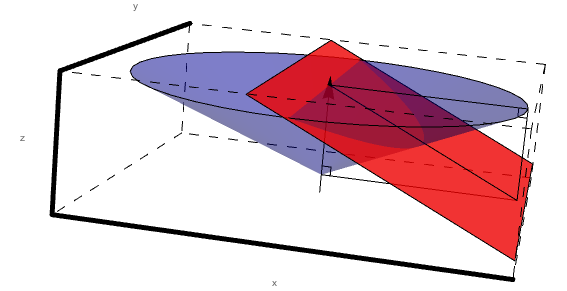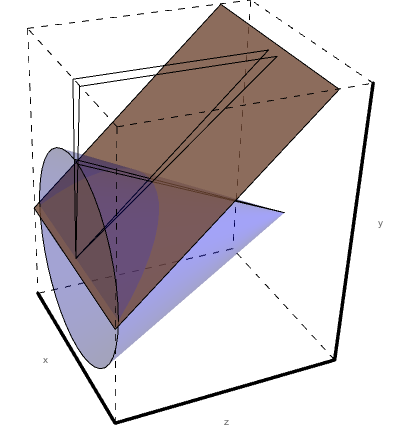Difference between revisions of "Determining wire-phi correspondance"
Jump to navigation
Jump to search






| Line 31: | Line 31: | ||
| − | For ellipses centered at ( | + | For ellipses centered at (h,k): |
| − | <center><math>\frac{(x- | + | <center><math>\frac{(x-h)^2}{a^2}+\frac{(y-k)^2}{b^2}=1</math></center> |
where | where | ||
| − | a = major radius (= 1 | + | <center><math>a = major\ radius\ (= \frac{1}{2}\ length\ major\ axis)</math></center> |
| − | b = minor radius (= 1 | + | |
| + | |||
| + | |||
| + | <center><math>b = minor\ radius\ (= \frac{1}{2}\ length\ minor\ axis)</math></center> | ||
<center>[[File:Ellipse.png]]</center> | <center>[[File:Ellipse.png]]</center> | ||
Revision as of 05:46, 3 January 2017

Using Mathematica, we can produce a 3D rendering of how the sectors for Level 1 would have to interact with a steady angle theta with respect to the beam line, as angle phi is rotated through 360 degrees.
Looking just at sector 1, we can see that the intersection of level 1 and the cone of constant angle theta forms a conic section.


Following the rules of conic sections we know that the eccentricity of the conic is given by:
Where β is the angle of the plane, and α is the slant of the cone.
If the conic is an circle, e=0
If the conic is an parabola, e=1
If the conic is an ellipse,

For ellipses centered at (h,k):
where

For a parabola:
where
p = distance from vertex to focus (or directrix)